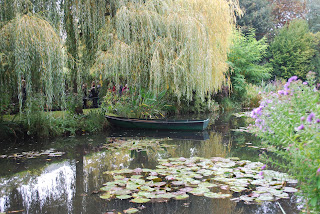 |
| 'The Rocker', by DG Hudson |
If inanimate objects could talk, we could ask from whence they came. This post illustrates the attachment some of us have for the history of an object. Objects can inspire wonder, motivate research, and later provide fodder to be used in writing. This chair, The Rocker, is one of those objects for me.
The seat is dark green leather, the wood could be maple
or oak. It’s dated by the antique store as 1850s vintage. (The American Civil
War took place between 1861 - 1865.) The wear is more evident in the
middle of the rockers, but the sturdiness of the chair's curves show its hidden
strength. The original seat is long gone, the leather one was added by a friend. A wide headboard and tall back provide support for the head and shoulders of an
adult. The low arms seem designed for the ease of holding a small child.
Due to its venerable age and for its own protection, The
Rocker was hidden in the bedroom during the rambunctious years of our kids. One
wooden armchair provided an early warning of what could happen, when it suffered
structural damage after a backwards fall.
Was The Rocker created by a loving father before
or during the Civil War? Did a mother or a young helper use this chair to
soothe a fretful child as the 19th century turned into the 20th? How many children have been rocked into pleasant rest or
heard fanciful stories of hidden worlds in this very chair?
 |
| 'The Rocker' back view, by DG Hudson |
Did a Victorian mother rock in a similar chair while she waited for the daughter and her escort to return? Did the girl who danced as a flapper wait in the chair for her beau to come by, while reading one of the new serials?
Did someone write letters in this chair during the war years? Where was The Rocker during the Depression? Stored or sitting on a front porch? How did it get to be in the respected furniture dealers' lot in Canada? Stored and shipped around, the chair could have come from England or eastern Canada. The possibilities are endless in my imagination.
Did someone write letters in this chair during the war years? Where was The Rocker during the Depression? Stored or sitting on a front porch? How did it get to be in the respected furniture dealers' lot in Canada? Stored and shipped around, the chair could have come from England or eastern Canada. The possibilities are endless in my imagination.
Purchased in an antique furniture dealers' store, The Rocker was my reading chair when we first discovered it, before it became the primary means of inducing sleep in those under the age of two. The Rocker, if it is from the 1850s, is about 163 years old now. It's still rocking.
***
Do you have rocking chairs, old or modern? If rocking chairs aren't your style, do you collect other objects with historical value?
This post was inspired by Ella's Edge "Do you have a favorite chair?". Thanks Ella, for stirring those memories.
Please share your thoughts in the comments and thanks for dropping by.
***
References:
old (less than 100 years) or antique rocking chairs (greater than 100 years)
http://www.collectorsweekly.com/stories/83305-my-rocking-chair-i-cant-identify?in=180 Collectors Weekly photo that's similar
***
Do you have rocking chairs, old or modern? If rocking chairs aren't your style, do you collect other objects with historical value?
This post was inspired by Ella's Edge "Do you have a favorite chair?". Thanks Ella, for stirring those memories.
Please share your thoughts in the comments and thanks for dropping by.
***
References:
old (less than 100 years) or antique rocking chairs (greater than 100 years)
http://www.collectorsweekly.com/stories/83305-my-rocking-chair-i-cant-identify?in=180 Collectors Weekly photo that's similar
http://www.collectorsweekly.com/furniture/rocking-chairs/stories Varieties of antique and old rocking chairs.
***







